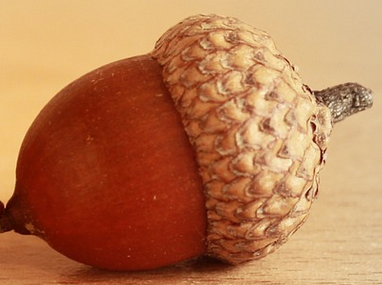PoD Setup
13 Library
 |
Adding printed open textbooks to the library provides examples for instructors considering adoption and access to students who need or want a physical book. |
Like at UVic, the Langara College library and bookstore have a strong partnership with the goal of providing “students and instructors with a centralized place to gather course materials, whether print or digital, commercial or openly licensed.” Instructors who use OER in the classroom are asked to inform the Langara Bookstore so these items can be added to the course materials list.[1]
Besides including open textbooks and other OER in its bookstore, Langara College is one of several post-secondary institutions in British Columbia that stocks open textbooks on its library shelves as course references. Still, not everyone agrees that college and university libraries should include printed open textbooks. The below list of considerations is a good place for libraries to begin the discussion about where they stand on this matter.
Library considerations
- Should a printed copy of all assigned open textbooks be added to the course reserve? If not, should a digital copy be added to the electronic reserve?
- How much of the library budget should be allocated to printing open textbooks?
- How many copies of each printed textbook should be added to the library reserve collection? What factors determine this number?
- Should the library add printed open textbooks to its reference collection for faculty considering the adoption of an OER for a course? How will these textbooks be chosen?
- Are there supplemental items that can be added to open textbooks, such as bookmarks, that explain the purpose behind using these course materials?
- Once a printed open textbook no longer meets the requirements of a course or has been revised and replaced by a newer version, what happens to the old one? Will it remain in the collection, or be donated to students or instructors? Can it be used as part of the open education advocacy work at the college, institute, or university?
Respondents to the BCcampus Print-on-Demand Survey were split on whether or not printed copies of open textbooks should be part of a post-secondary library’s collection. This is what they said.
| … belong in the library | … do not belong in the library |
|---|---|
|
|
Library templates
Here are templates to plan and direct the library’s participation in an open textbook printing service:
- Printed open textbook decision form [Word file]
- Open textbook tracking form [Word file]
- Open textbook options for adoption [Word file]
Libraries in action
Opinions aside, several colleges and universities are choosing to include printed OER in their library stacks. In addition to Langara College, other examples are listed below.
Douglas College
Debra Flewelling, Open Education & Emerging Technologies Librarian at Douglas College, says that, in the past, her department would buy bound copies of select open textbooks so faculty could assess them as they considered adopting an open educational resource. If an instructor chose to use an open textbook, a printed copy was placed in the library’s course reserve.
“What’s changing our practice these days,” adds Flewelling, “is that some of our faculty have moved beyond adoption to adaptation. We’re now experimenting with printing and Cerlox-binding textbooks in our printshop in order to include open textbooks in our course reserves.”
University of British Columbia (UBC)
The UBC Library houses several Open Collections, including UBC publications and theses and dissertations by its students. cIRcle, UBC’s open access digital repository, contains published and unpublished materials authored by UBC staff, faculty, students, and its partners and the surrounding community.
Kwantlen Polytechnic University (KPU)
At KPU, the library does not automatically put required open textbooks on reserve. Instead, it allows each faculty member to decide whether their adopted textbooks should be placed there.
“We also leave it up to the student whether they would like to use the online or print copy of a required open textbook,” says Caroline Daniels, Librarian at KPU. “We have made print-on-demand (PoD) services available in a number of ways in hopes of accommodating all the different scenarios that may arise. While faculty can make arrangements in advance with the KPU bookstore to make printed books available to students within their courses, the library can also help students obtain print copies of open textbooks for any of their courses for the price of printing.”
This is done, explains Daniels, either through KPU’s print services or, for books in the B.C. Open Collection, through SFU Document Solutions (see Appendix B). KPU has made a special arrangement with SFU whereby print-on-demand open textbooks are delivered at no charge to a KPU campus through B.C.’s post-secondary interlibrary loan service.
“In the end,” says Daniels, “we try to think of what suits the student best.”
Media Attributions
- Acorn Oak Brown © svklimkin is used under a Pixabay License and is adapted by Lauri Aesoph
- “Contact Us,” Open Education Research Guide, Langara College Library, last modified June 18, 2020, https://langara.libguides.com/open-education/contact-us. ↵

